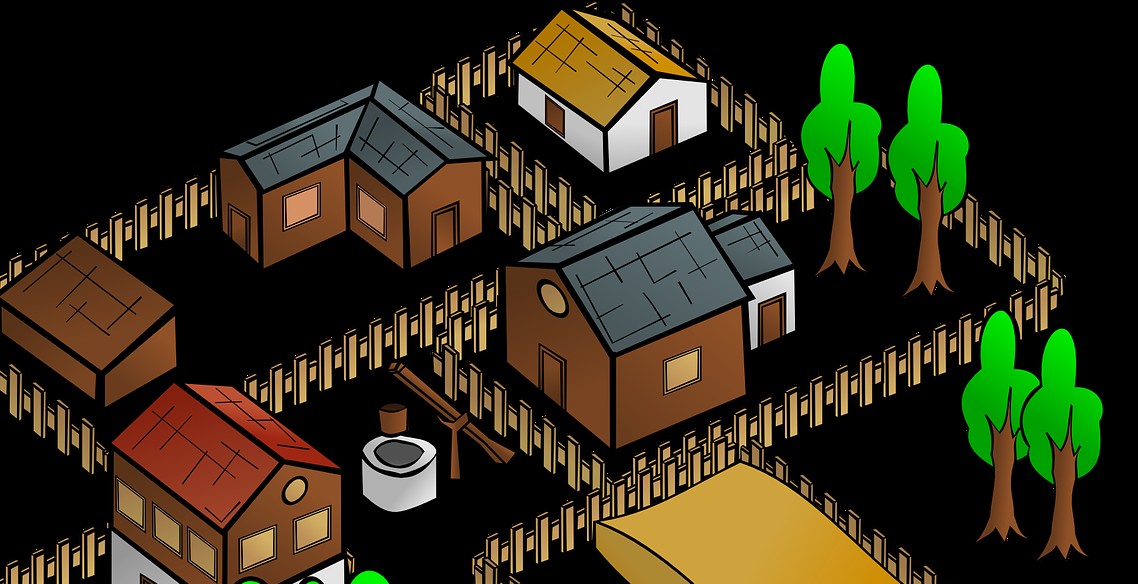How to Create a Beautiful Garden: Landscape Design and Planting Tips
If you are looking to create a beautiful garden, you have come to the right place. As a professional article writer and content creator with years of experience in gardening, I have learned a lot about landscape design and planting. In this article, I will share with you my personal experience and tips on how to create a stunning garden that will make your neighbors envious.
The Importance of Landscape Design
Landscape design is the foundation of a beautiful garden. Before you start planting, you need to create a plan that takes into consideration the size and shape of your garden, the type of soil you have, the amount of sunlight your garden receives, and the climate in your area.
When designing your landscape, think about the different elements you want to include, such as paths, patios, water features, and garden beds. Make sure that your design is cohesive and flows well, and that it complements the style of your home.
Planting Tips
Once you have your landscape design in place, it’s time to start planting. When choosing plants, consider their size, color, and texture, and make sure that they are suitable for the conditions in your garden.
When planting, make sure to give each plant enough space to grow, and consider their growth habits. Some plants will spread quickly and can quickly take over your garden if not properly contained.
By following these landscape design and planting tips, you can create a beautiful garden that you will be proud of for years to come.
Assess Your Space
Before you start creating your garden, it’s important to assess your space and consider a few key factors that will impact your design choices. By taking these factors into account, you can ensure that your garden will thrive and look beautiful for years to come.
Consider Your Climate and Soil Type
The climate and soil type in your area will play a big role in determining what plants will grow well in your garden. Some plants prefer cooler temperatures and more moisture, while others thrive in hot, dry conditions. Additionally, different soil types will have varying levels of nutrients and drainage capabilities.
Consider doing a soil test to determine the pH level and nutrient content of your soil. This will help you choose plants that will do well in your specific soil conditions.
Identify Your Sun and Shade Patterns
Another important factor to consider is how much sun and shade your garden receives throughout the day. Some plants require full sun to grow, while others prefer partial or full shade.
Take note of the sun and shade patterns in your garden throughout the day and plan your planting accordingly.
Determine Your Garden Style
Finally, think about the overall style and aesthetic you want for your garden. Do you prefer a formal, structured look or a more natural, wildflower-filled space?
Consider the architecture of your home and any existing landscaping features when choosing your garden style. You want your garden to complement and enhance the existing elements of your outdoor space.
- Consider your climate and soil type when choosing plants
- Identify sun and shade patterns in your garden
- Determine your garden style to complement your outdoor space

Plan Your Design
Creating a beautiful garden requires careful planning and consideration. Before you start planting, it’s important to create a rough sketch of your garden design. This will help you visualize the space and ensure that you make the most of the available area.
Choose Your Focal Points
When planning your garden design, it’s important to choose one or more focal points. These could be a stunning water feature, a beautiful tree or a striking piece of garden art. By choosing a focal point, you can create a sense of balance and harmony in your garden.
Consider the Seasons
Another important factor to consider when planning your garden design is the changing seasons. Choose a variety of plants that will bloom at different times throughout the year, ensuring that your garden looks beautiful all year round. You should also consider the amount of sunlight your garden receives and choose plants that are suitable for the conditions.
Incorporate Hardscaping
Hardscaping is an important part of any garden design. This includes features such as paths, patios, and retaining walls. When planning your hardscaping, it’s important to choose materials that complement your garden and create a cohesive look. Consider using natural materials such as stone, gravel, or wood to create a rustic feel, or opt for sleeker materials such as concrete or metal for a more modern look.
- Create a rough sketch of your garden design
- Choose one or more focal points
- Consider the changing seasons and choose plants accordingly
- Incorporate hardscaping to create a cohesive look
By following these tips, you can create a beautiful garden that will be the envy of your neighborhood.

Select Your Plants
One of the most exciting parts of creating a beautiful garden is choosing the plants that will bring it to life. When selecting your plants, keep in mind the following tips:
Choose Your Color Scheme
One of the easiest ways to create a cohesive and visually appealing garden is to choose a color scheme. This can be as simple as selecting plants in shades of one color, or as complex as combining complementary colors for a bold and striking look. Consider the colors of your home and any existing landscaping features when selecting your color scheme.
Consider Plant Sizes and Shapes
Plants come in a variety of sizes and shapes, and it’s important to consider this when selecting your plants. Taller plants can be used to create a focal point or to add height to a garden bed, while shorter plants can be used as ground cover or to fill in empty spaces. Make sure to also consider the shape of the plant, as this can add interest and depth to your garden.
Think About Texture and Form
The texture and form of your plants can also play a big role in the overall look of your garden. Plants with fine or delicate foliage can add a softness to your garden, while those with bold or coarse foliage can add drama and texture. Consider the overall form of the plant as well, such as whether it has a weeping or upright growth habit.
By keeping these tips in mind, you can select plants that will not only look beautiful but also work well together to create a cohesive and visually appealing garden.

Plant Your Garden
Now that you have your landscape design in place, it’s time to start planting your garden. Follow these tips to ensure a successful planting process:
Prepare Your Soil
Before planting, it’s important to prepare your soil. Clear away any weeds or debris and loosen the soil to a depth of at least 12 inches. If your soil is lacking in nutrients, add compost or fertilizer to improve its quality.
Plant Your Focal Points First
Start by planting your focal points first, such as trees and large shrubs. These plants will anchor your garden and provide a framework for the rest of your plants. Make sure to space them properly, taking into account their mature size.
Fill in the Gaps
Next, fill in the gaps with smaller shrubs, perennials, and annuals. Group plants together in odd numbers for a more natural look. Consider the height and texture of each plant to create interest and depth in your garden.
Water and Mulch Your Plants
After planting, water your plants thoroughly and apply a layer of mulch around them to retain moisture and prevent weeds. Water your plants regularly, especially during dry spells, and fertilize them as needed.
By following these planting tips, you’ll be well on your way to creating a beautiful garden that you can enjoy for years to come.
Maintain Your Garden
Maintaining your garden is just as important as creating it. A well-maintained garden not only looks beautiful but also promotes healthy growth of plants. Here are some tips to help you maintain your garden:
Water Your Plants Correctly
Watering your plants correctly is crucial for their growth and survival. Make sure you water them deeply and thoroughly, but not too often. Overwatering can lead to root rot and other diseases. The best time to water your plants is early in the morning or late in the evening when the sun is not too strong.
Fertilize Regularly
Fertilizing your plants regularly provides them with the necessary nutrients for healthy growth. Use organic fertilizers and follow the instructions on the package. Avoid over-fertilizing as it can harm your plants.
Prune and Deadhead
Pruning and deadheading your plants not only makes them look neater but also promotes new growth. Remove dead or diseased parts of the plant and cut back overgrown branches. Deadheading is the process of removing wilted or faded flowers to promote new blooms.
Keep Your Garden Clean
Keeping your garden clean is essential for preventing diseases and pests. Remove fallen leaves, weeds, and debris regularly. Use mulch to cover the soil around your plants to retain moisture and prevent weed growth.
| Task | Frequency |
|---|---|
| Watering | 2-3 times a week |
| Fertilizing | Once a month |
| Pruning and Deadheading | As needed |
| Cleaning | Weekly |
Following these tips and maintaining a regular garden maintenance schedule will help you keep your garden healthy and beautiful all year round.

Conclusion
Creating a beautiful garden is a rewarding experience that requires planning, patience, and creativity. By following the landscape design and planting tips outlined in this article, you can transform your outdoor space into a stunning and functional garden that reflects your personal style and enhances your quality of life.
Key Takeaways
- Start with a clear vision and plan for your garden.
- Consider the size, shape, and features of your outdoor space.
- Choose plants that thrive in your climate and soil conditions.
- Use a variety of colors, textures, and heights to create interest and balance.
- Incorporate hardscaping elements such as paths, walls, and water features.
- Maintain your garden regularly to keep it healthy and beautiful.
Final Thoughts
As a professional article writer and content creator with years of experience, I can attest to the fact that creating a beautiful garden is a labor of love. It requires time, effort, and dedication, but the results are worth it. Whether you are a seasoned gardener or a beginner, I encourage you to take the plunge and start designing your dream garden today. With the right tools, resources, and mindset, you can create a space that brings you joy and inspiration for years to come.
